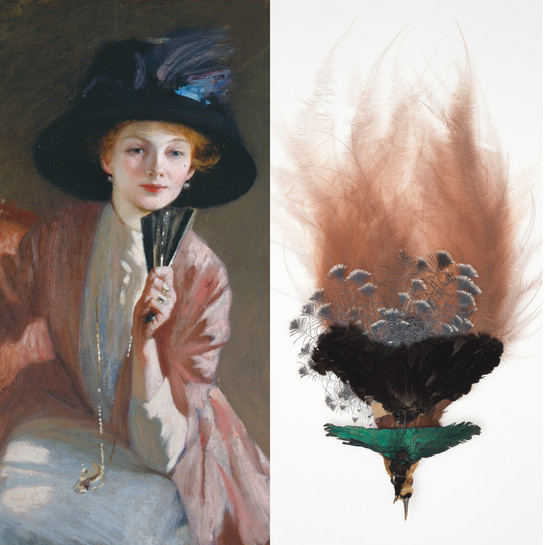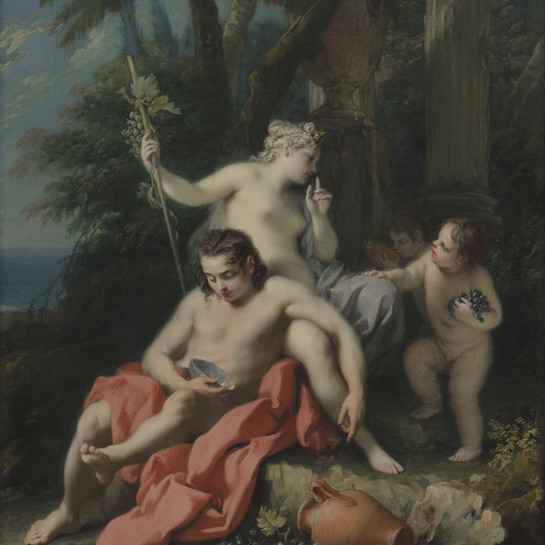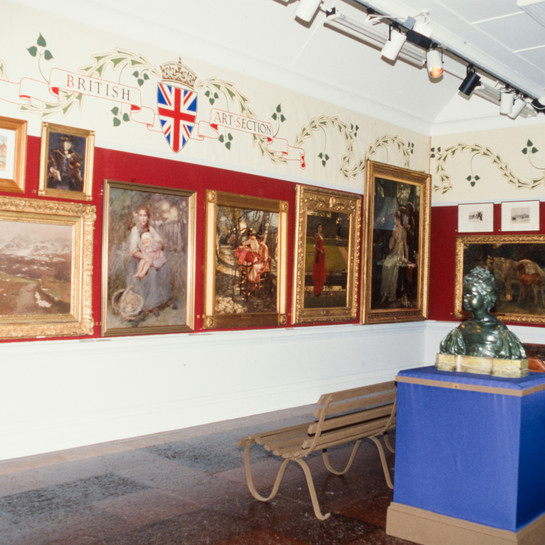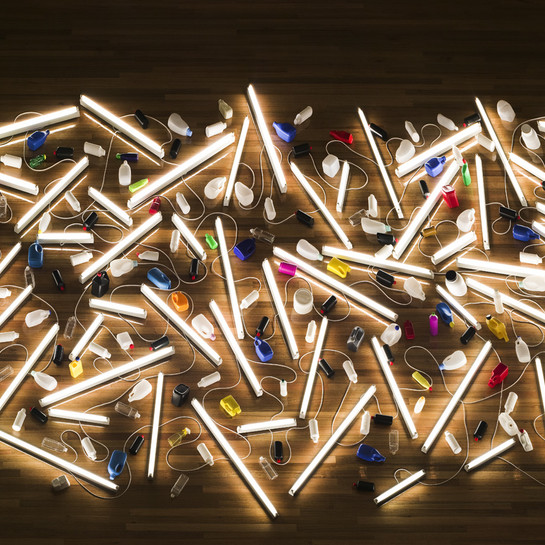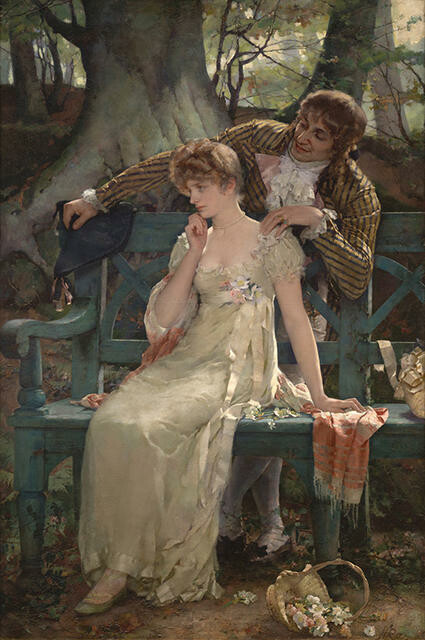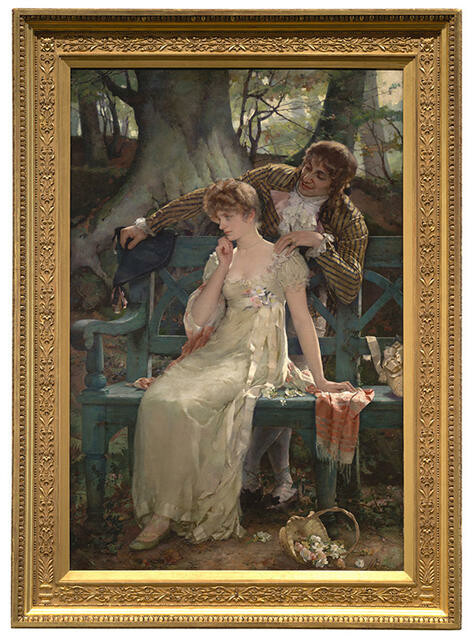Henrietta Rae
British, b.1856, d.1928
Doubts
- 1886
- Oil on canvas
- Presented by the Canterbury Society of Arts, 1932
- 2050 x 1500 x 90mm
- 69/378
Tags: baskets (containers), benches (furniture), chairs (furniture forms), decision making, flowers (plants), furniture, gardens (open spaces), men (male humans), outdoor furniture, people (agents), ribbon (material), stripes, trees, women (female humans)
Made early in her impressive career, Henrietta Rae’s Doubts reached Christchurch twenty years after it was painted, and was promptly purchased by the Canterbury Society of Arts. Rae was a painter of early promise and determination, and in her teens was the first female to study at the Heatherley School of Art in London. In 1885, she raised fleeting controversy at the Royal Academy’s summer show as the first woman to exhibit paintings featuring nudes. Retaining her name after marriage and motherhood, she built her reputation with work that was mainly classically inspired and allegorical. She was a supporter of women’s suffrage and organised the women only Victorian Era Exhibition in 1897, coinciding with Queen Victoria’s Diamond Jubilee.
Ship Nails and Tail Feathers, 10 June – 22 October 2023
Exhibition History
Persistent Encounters, 10 March 2020 – 19 September 2021]( https://christchurchartgallery.org.nz/exhibitions/persistent-encounters)
In 1884, London-born Henrietta Rae married and began a dual studio partnership with Ernest Normand, a fellow student at the Royal Academy schools. In the following year she became a mother, and raised mild controversy with two classically-themed works in the Academy’s annual summer exhibition, being the first woman to exhibit paintings featuring nudes. (One of these, incidentally, included Ariadne, the Greek mythological figure pictured in the work at left by Amigoni.) The demands of motherhood made Doubts the only painting she completed in 1886.Brought to New Zealand for the 1906–07 Christchurch International Exhibition, Doubts was appraised by feminist poet Jessie Mackay as a modernised version (albeit in eighteenth-century attire) of an established classical theme, “A satyr and a dryad”. She described the persistent suitor as “the picture of Vice, grinning, nonchalant, most artful when most artless, offering its soiled hand to ingenuous child-eyed Virtue… as old and as new as the sun.”
Storytellers, November 2010 – June 2011
Henrietta Rae subtitled this work ‘An ingénue hesitating to accept the proposal of a roué’. The inexperienced young woman is being pressured by her immoral suitor, who is driven more by lust than love. Alone in the isolation of the woodland setting with no chaperone in sight, she is vulnerable to his advances, and symbols throughout the composition suggest she is about to give in. The spring flowers allude to the bloom of youth but they have tumbled to the ground, suggesting a fall from grace.
Scenes of beautiful young women seated outdoors were known as ‘garden bench’ subjects and had a popular following in Victorian times. However, Henrietta Rae subtitled this work, ‘An ingénue hesitating to accept the proposal of a roué’, suggesting that, rather than romance, the man’s proposal has something improper about it. The highly finished technique, where the brushstrokes are barely visible to the viewer, shows the influence of Rae’s academic training and Doubts was exhibited in a favourable position at the Royal Academy in 1886. Born in London, Rae studied art from the age of 13 but, given contemporary attitudes towards women, it took her several attempts before she was accepted into the Royal Academy Schools. In 1880 she won a seven year Academy scholarship. Rae married the historical painter Ernest Normand (1859 -1923) in 1884 and they shared a studio in Holland Park Road. She gained the place of honour at the 1894 Academy exhibition for her large classical painting Psyche at the Throne of Venus. (Opening Gallery hang, May 2003)
Usually applying her academic painting techniques to history paintings of Greek mythology, Rae has here produced a fine Victorian costume painting. Scenes in which beautiful young women were painted seated outdoors, were known as 'garden bench' subjects and had a popular following in Victorian times. Here Rae introduces a gently sexual element and subtitled the work, 'An ingénue hesitating to accept the proposal of a roué'. The clarity and careful realism of the late eighteenth century French Empire fashions and the English woodland setting help to dilute the somewhat cloying sweetness and romanticism of this exquisitely finished work. 'Doubts' was exhibited at the Royal Academy in 1886 where it was hung 'on the line', which was the most favourable viewing position, and it received a very enthusiastic response from the public and the critics. (Before 2003)
